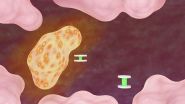Do biofuel policies seek to cut emissions by cutting food?
2015-03-27
(Press-News.org) A study published today in the journal Science found that government biofuel policies rely on reductions in food consumption to generate greenhouse gas savings.
Shrinking the amount of food that people and livestock eat decreases the amount of carbon dioxide that they breathe out or excrete as waste. The reduction in food available for consumption, rather than any inherent fuel efficiency, drives the decline in carbon dioxide emissions in government models, the researchers found.
"Without reduced food consumption, each of the models would estimate that biofuels generate more emissions than gasoline," said Timothy Searchinger, first author on the paper and a research scholar at Princeton University's Woodrow Wilson School of Public and International Affairs and the Program in Science, Technology, and Environmental Policy.
Searchinger's co-authors were Robert Edwards and Declan Mulligan of the Joint Research Center at the European Commission; Ralph Heimlich of the consulting practice Agricultural Conservation Economics; and Richard Plevin of the University of California-Davis.
The study looked at three models used by U.S. and European agencies, and found that all three estimate that some of the crops diverted from food to biofuels are not replaced by planting crops elsewhere. About 20 percent to 50 percent of the net calories diverted to make ethanol are not replaced through the planting of additional crops, the study found.
The result is that less food is available, and, according to the study, these missing calories are not simply extras enjoyed in resource-rich countries. Instead, when less food is available, prices go up. "The impacts on food consumption result not from a tailored tax on excess consumption but from broad global price increases that will disproportionately affect some of the world's poor," Searchinger said.
The emissions reductions from switching from gasoline to ethanol have been debated for several years. Automobiles that run on ethanol emit less carbon dioxide, but this is offset by the fact that making ethanol from corn or wheat requires energy that is usually derived from traditional greenhouse gas-emitting sources, such as natural gas.
Both the models used by the U.S. Environmental Protection Agency and the California Air Resources Board indicate that ethanol made from corn and wheat generates modestly fewer emissions than gasoline. The fact that these lowered emissions come from reductions in food production is buried in the methodology and not explicitly stated, the study found.
The European Commission's model found an even greater reduction in emissions. It includes reductions in both quantity and overall food quality due to the replacement of oils and vegetables by corn and wheat, which are of lesser nutritional value. "Without these reductions in food quantity and quality, the [European] model would estimate that wheat ethanol generates 46% higher emissions than gasoline and corn ethanol 68% higher emissions," Searching said.
The paper recommends that modelers try to show their results more transparently so that policymakers can decide if they wish to seek greenhouse gas reductions from food reductions. "The key lesson is the trade-offs implicit in the models," Searchinger said.
INFORMATION:
ELSE PRESS RELEASES FROM THIS DATE:
2015-03-27
HOUSTON - (March 27, 2015) - Saudi Arabia's role in global energy markets is changing, according to a new paper from an energy expert at Rice University's Baker Institute for Public Policy. The researcher found that the kingdom is reshaping itself as a supplier of refined petroleum products while moving beyond its long-held role as a simple exporter of crude oil.
"A Refined Approach: Saudi Arabia Moves Beyond Crude" examines the growth of Saudi refining, the country's increased domestic demand for crude oil and the geopolitical effects of this development. The paper was ...
2015-03-27
In the world of bird fashion, the guys seem to have all the fun: brighter feathers, sharper accessories, more pizzazz.
Researchers going back to Charles Darwin have focused on the contrast between the sexes, attributing the males' brighter colors to their need to attract mates.
A group of researchers at University of Wisconsin-Milwaukee took a different approach, testing a hypothesis that evolution has actually resulted in similarities among the sexes as much as differences.
Looking at nearly 1,000 species of birds, they found that while males often have brighter ...
2015-03-27
TAMPA, Fla. - Moffitt Cancer Center researchers are using integrative approaches to study cancer by combining mathematical and computational modeling with experimental and clinical data. The use of integrative approaches enables scientists to study and model cancer progression in a manner that conventional experimental systems are unable to do.
Alexander Anderson, Ph.D., chair of the Department of Integrated Mathematical Oncology (IMO) and Mark Robertson-Tessi, an applied research scientist in IMO, recently published a commentary on an integrative approach used to study ...
2015-03-27
The promising new material molybdenum disulfide (MoS2) has an inherent issue that's steeped in irony. The material's greatest asset--its monolayer thickness--is also its biggest challenge.
Monolayer MoS2's ultra-thin structure is strong, lightweight, and flexible, making it a good candidate for many applications, such as high-performance, flexible electronics. Such a thin semiconducting material, however, has very little interaction with light, limiting the material's use in light emitting and absorbing applications.
"The problem with these materials is that they are ...
2015-03-27
Scientists working at the National Institute of Standards and Technology (NIST) and the National Institutes of Health (NIH) have devised and demonstrated a new, shape-shifting probe, about one-hundredth as wide as a human hair, which is capable of sensitive, high-resolution remote biological sensing that is not possible with current technology. If eventually put into widespread use, the design could have a major impact on research in medicine, chemistry, biology and engineering. Ultimately, it might be used in clinical diagnostics.
To date, most efforts to image highly ...
2015-03-27
March 27, 2015 - For people with low vision who need bioptic telescopic glasses to drive, previous driving experience and the need for more training hours are the main factors affecting performance on driver's license road tests, according to a study in the April issue of Optometry and Vision Science, official journal of the American Academy of Optometry. The journal is published by Wolters Kluwer.
After driving experience is taken into account, visual factors have no significant effect on road test scores in drivers using bioptic devices, report Bradley E. Dougherty, ...
2015-03-27
Cold snaps like the ones that hit the eastern United States in the past winters are not a consequence of climate change. Scientists at ETH Zurich and the California Institute of Technology have shown that global warming actually tends to reduce temperature variability.
Repeated cold snaps led to temperatures far below freezing across the eastern United States in the past two winters. Parts of the Niagara Falls froze, and ice floes formed on Lake Michigan. Such low temperatures had become rare in recent years. Pictures of icy, snow-covered cities made their way around ...
2015-03-27
University of Notre Dame applied mathematician Mark Alber and environmental biotechnologist Robert Nerenberg have developed a new computational model that effectively simulates the mechanical behavior of biofilms. Their model may lead to new strategies for studying a range of issues from blood clots to waste treatment systems.
"Blood clotting is a leading cause of death in the United States at this point," said Alber, who is The Vincent J. Duncan Family Professor of Applied Mathematics in the College of Science and an adjunct professor of medicine at the Indiana University ...
2015-03-27
TEMPE, Ariz. (March 27, 2015) - As more people move to different regions of the country it will require planners to use as many tools as they can to develop urban areas that satisfy population demands and not over burden the environment.
A new study from Arizona State University (ASU) details some of the dynamics at play as one region of the country, the Central Valley of California, braces for substantial population growth and all it entails. The study, based on computer simulations using the ASU Advanced Computing Center, of rural to urban land conversion shows that ...
2015-03-27
March 27, 2015--A study by researchers at Columbia University's Mailman School of Public Health and colleagues in the Netherlands evaluated the relationship between nutritional conditions in very early life and adult health, and found that famine exposure during the first pregnancy trimester was associated with increases in mortality from a variety of causes other than cancer or cardiovascular disease.
This is the first study to quantify the possible long-term effects of nutrition deprivation at different stages of pregnancy and long-term mortality from causes of death ...
LAST 30 PRESS RELEASES:
[Press-News.org] Do biofuel policies seek to cut emissions by cutting food?

